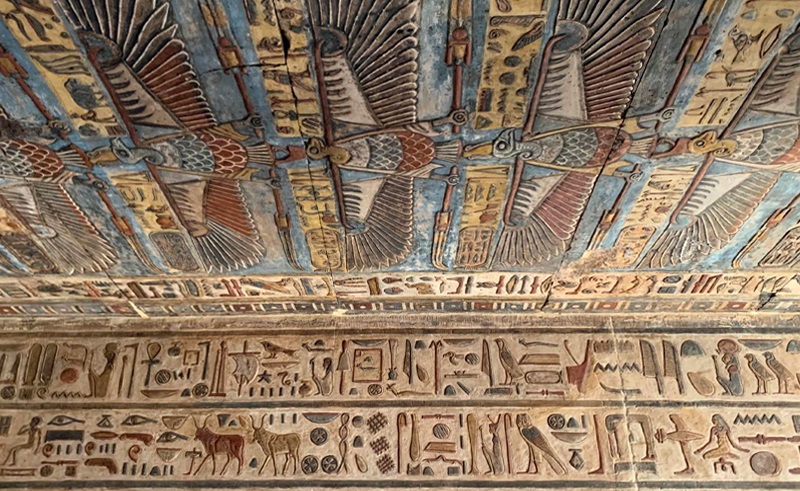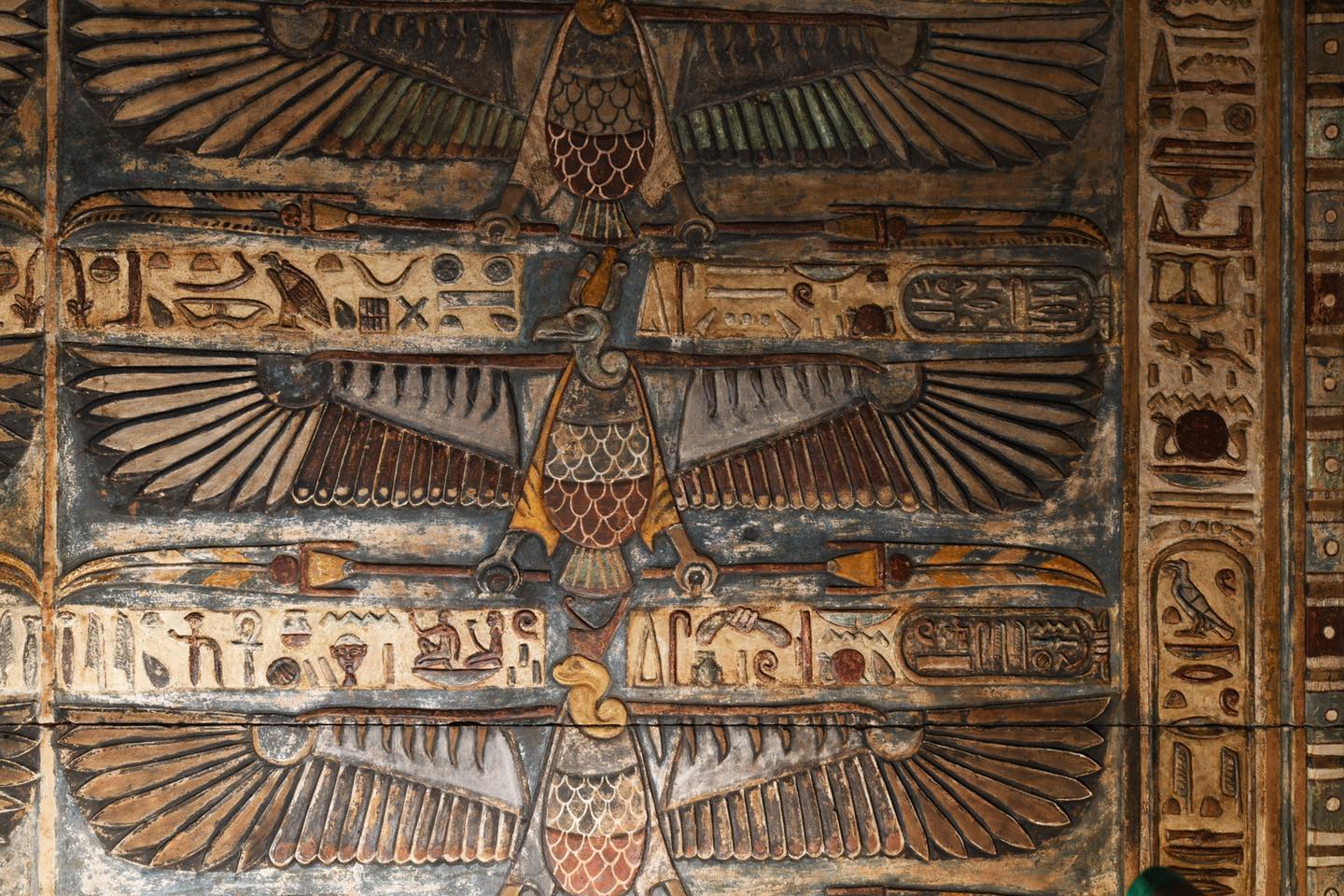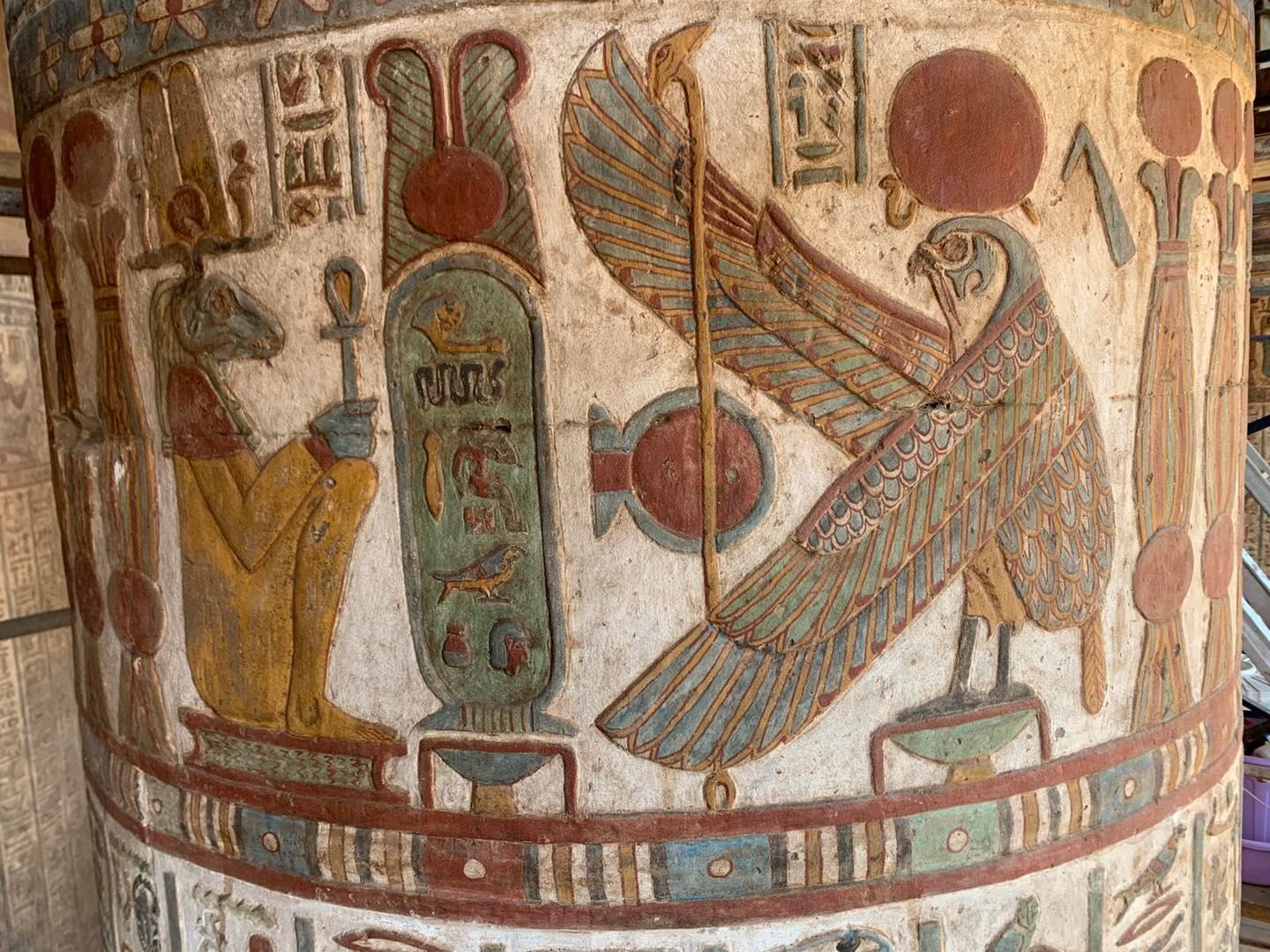Restoration of Esna Temple Unveils Its Ancient Beauty
The drawings show 46 eagles in two rows, with 24 of them carrying an eagle head to represent Nekhbet, Goddess of Upper Egypt, and 22 with cobra heads that represent Wagit, Goddess of Lower Egypt.

For the first time in modern history, we are now able to see the colourful detailed inscriptions on the Temple of Esna in Luxor, after a German-Egyptian archaeological mission finished its extensive restoration process.
The drawings show 46 eagles in two rows, with 24 of them carrying an eagle head to represent Nekhbet, the Goddess of Upper Egypt from the Cape, and 22 others with cobra heads that represent Wagit, the Goddess of Lower Egypt.

For nearly 2,000 years, thick layers of soot, dust, dirt, and remains of birds, bats, and spiders' nests had accumulated over the drawings, which necessitated the development of the temple in order to preserve it and its ancient inscriptions. The restoration process was done with funding from the American Research Center in Egypt.

During the cleaning of the western side of the temple, a Greek inscription drawn in red ink was discovered. It dates back to the reign of Emperor Domitian (81-96 AD) and was written with a specific day and month (Epiphi 5). This date corresponds to the end of June and the beginning of July, and marked the completion of the Temple’s original construction.
- Previous Article Dr.Sisilove or How (Not) To Diffuse A Bomb
- Next Article Nadine Abdel Ghaffar & Maha Abo Elenein to Speak at VeeCon 2022
Trending This Week
-
Apr 10, 2024
-
Apr 10, 2024
























